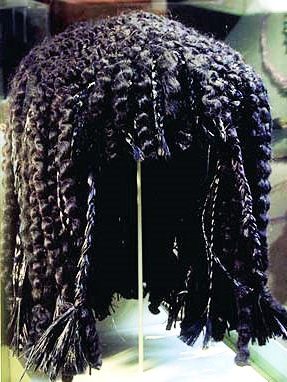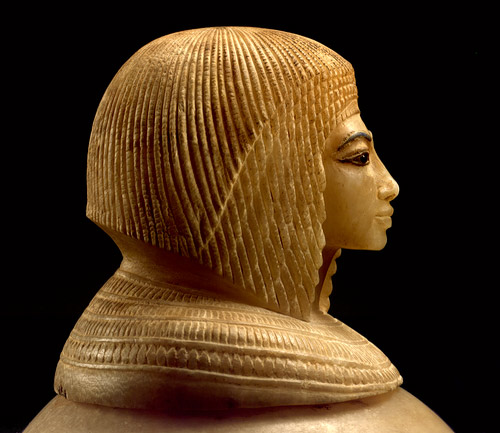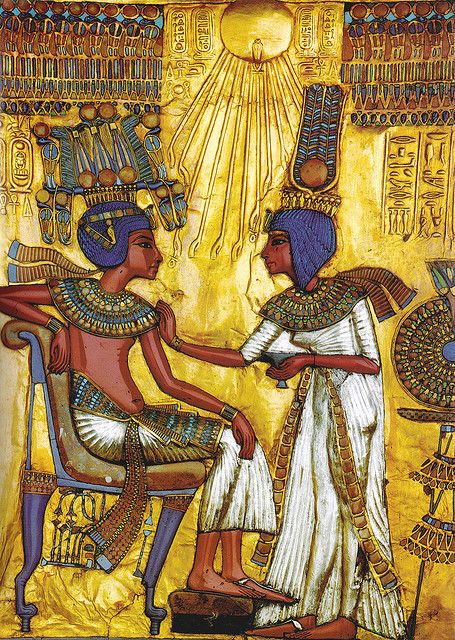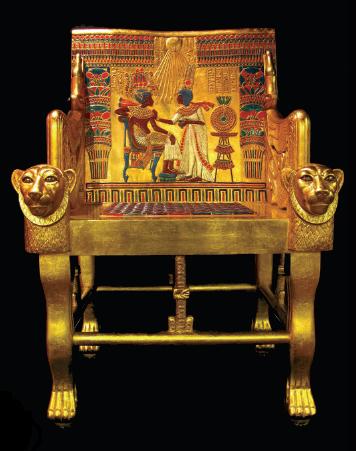Queen Nefertiti, who lived during the fourteenth century b.c.e., was known for wearing dark blue wigs, and festive wigs were sometimes gilded, or thinly coated in gold. The wig hair often stuck straight out from the skullcap, creating large, full wigs that offered wearers protection from the heat of the sun. Most often black, wigs were also other colors. The base of an Egyptian wig was a fiber-netting skullcap, with strands of human hair, wool, flax, palm fibers, felt, or other materials attached.

Upper-class Egyptian men and women considered wigs an essential part of their wardrobe. Wearing a wig signaled a person’s rank in Egyptian society. Although a shaved head was a sign of nobility during most of the Egyptian kingdoms, the majority of Egyptians kept their heads covered.

Wigs were worn in place of headdresses or, for special occasions, with elaborate headdresses.
–Wigs Facts, information, pictures | Encyclopedia.com articles about Wigs
Example of blue wigs in ancient Africa
Queen Nefertiti, who lived during the fourteenth century b.c.e., was known for wearing dark blue wigs.
Famous Image on Tutankhamen’s Chair


–Thank you for sharing!
Dr Zahi Hawass talks about some of his favourite artefacts from the Tomb of King Tutankhamun (KV62), including the Golden Mask of King Tut, the External Trappings of the Mummy and the Golden Throne. He speaks of his fascination of the combination of different precious stones and gold incorporated into artefacts, and how Ancient Egyptian art was influenced by religion.

No Comments Yet